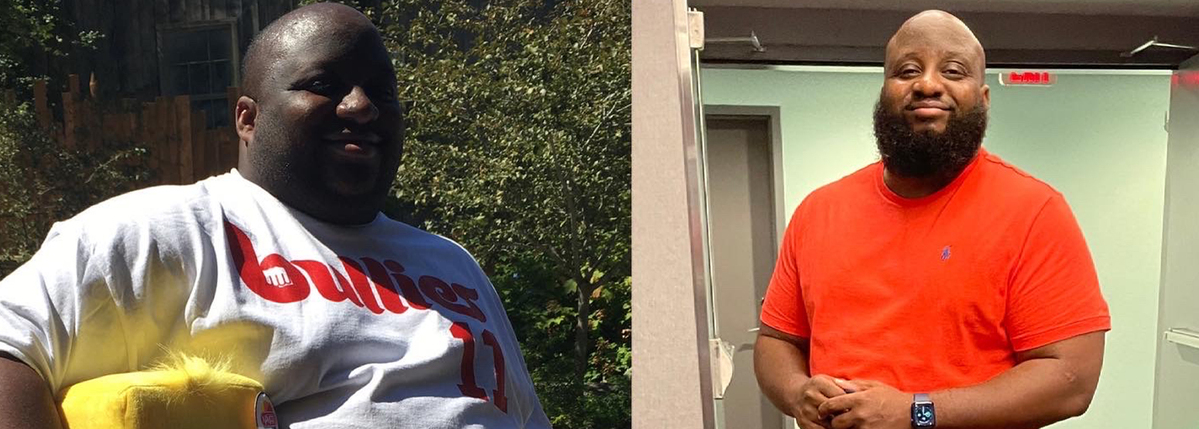“I stopped taking insulin in January 2021,” says Prince Blue
Editor’s note: While this story tells the experience of a man who was able to stop taking insulin for his type 2 diabetes, this is not necessarily possible for all people with type 2 diabetes. Some people will need the support of daily insulin therapy for the rest of their lives. Type 2 diabetes is a complex disease. Some people will need the support of daily insulin therapy or other types of diabetes medications. Others may find changes in diet and exercise are enough to improve blood sugar levels. Please talk to your doctor before making any changes in your diabetes regimen if you live with type 1 or type 2 diabetes.
Starting insulin as a person with type 2 diabetes can be an overwhelming and scary step. For some, it may be a temporary method of getting your blood sugars quickly down into a safer range while working on other approaches for long-term diabetes management. For others, it may be a lifelong part of your diabetes management.
For Prince Blue, insulin seemed like something he would need to take for the rest of his life. Diagnosed with type 2 diabetes ( T2D) in 2015, Prince says he was sick and feeling terrible for months leading up to that day in February.
With an A1c of 17.6 percent at his diagnosis, Prince looks back and realizes he should’ve started insulin right away.
“My doctor wanted to start me on insulin right away, but I’m scared of needles,” explains Prince. “So I started on metformin, along with diet and exercise.”
Today, Prince is a 40-year old retired police officer living in Charlotte, NC. With a masters degree in criminal justice and currently pursuing his doctorate in the same, Prince is also busy raising his three young children with his wife and hosting his podcast, Real Time with Prince Blue.
His memories of using metformin aren’t pretty.
“The bathroom,” he laughs, regarding the medication’s most notorious side-effects. “I remember spending a lot of time in the bathroom.”
For at least six months, Prince recalls constantly starting and stopping metformin.
“I’d take it for a week, get sick, try to wait it out, eventually stop taking it, over and over,” he says. He also tried Trulicity, which left him feeling flu-ish.
His blood sugars were so high during those first two years after his diagnosis that he fell into two separate comas and was diagnosed with neuropathy in his hand and feet.
Starting insulin: “We tried it my way for the first year.”
“We tried it ‘my way’ for that first year,” he recalls, before his doctor convinced him to start multiple daily injections (MDI) of insulin.
“Honestly, I wish I’d started insulin sooner because it probably would’ve led to where I’m at now sooner, but I know that my failures are what drives me more now than my earlier successes because I was heavier then, and I was miserable.”
After struggling to consistently take his injections due to needle-phobia, Prince started using the V-Go patch pump and eventually the Omnipod Dash System, bringing his A1c down to 8.1 percent. He’s also used the Freestyle Libre, and today, a Dexcom continuous glucose monitor (CGM) to check his blood sugars.
Prince credits both consistency with taking insulin and changes in his eating and exercise habits for the 10-point reduction in his A1c.
But over the last two years, Prince says his old habits crept back in and his A1c started rising.
“I wasn’t losing weight, and I was using insulin as a crutch to eat more junk,” recalls Prince. “I’d be like, ‘Okay, I can take 16 units to eat this Honey Bun, or okay this is 72 grams of carbs, I’ll take this much insulin, no big deal,’ but I wasn’t losing weight. I plateaued because I wasn’t exercising and I wasn’t caring about what I was eating.”
Eventually, his A1c had increased back over 11 percent. And most importantly, Prince says he felt terrible.
Quitting insulin: “I took myself off insulin in January 2021.”
“In January 2021, I took myself off insulin,” says Prince, who didn’t discuss the decision with his doctor, and would strongly recommend others talk to their own doctor before making any changes to their medication regimen.
By the time Prince went to his next diabetes check-up in May of 2021, he’d been off insulin for nearly five months, being especially diligent with exercising and making thoughtful choices around food.
“When my endocrinologist asked to see my pump settings, I had to tell her I’d stopped taking my insulin months ago,” recalls Prince. “She panicked. She stopped the appointment and sent me to go get blood work immediately.”
But his A1c came back at 5.9 percent.
“Whatever you’re doing, keep doing it,” his doctor told him. “If you can keep doing what you’re doing, keep doing it.”
Staying off insulin: “I had to get serious about my diet and exercise.”
“I had to get serious about my diet and exercise,” says Prince, who started going to the gym four to five days a week for 45 minutes of weightlifting followed by 15 minutes of shooting hoops on the basketball court.
In his previous efforts to be more active, Prince says he’d tried to focus on cardio exercise—which he hated.
“The best thing I did was start going to the gym to lift weights,” he smiles, remembering the simple starting point of following a weightlifting program he found on the internet. “I’m a big guy, and I like to pick-up heavy things and put ‘em down!”
Prince quickly learned, too, to ditch the scale and focus more on how he feels and looks in the mirror.
“My weight was only down by 35 pounds—I still weigh 270 pounds!” he says. “But that’s why the scale is the devil, because it’s telling me I’m still fat and worthless, but everything else—especially my blood sugars—are telling me that I am doing something right.”
Despite the scale not moving dramatically, Prince knew the changes in his torso were very dramatic, taking on a completely different shape in the mirror.
“My clothes were baggier, and people were like, ‘Yo Prince, you look good! What are you doing?’”
Even his hat fits better.
Changes in my diet: “I haven’t stopped eating what I love.”
When it comes to his diet, he’s made some equally reasonable and sustainable changes.
“I haven’t stopped eating what I love, but I made a lot of simple changes,” explains Prince. “I used to get a Big Mac, large fries and a soda. Now I get a Happy Meal with Big Mac sauce added to it, and I never drink soda or juice anymore.”
Prince estimates that instead of eating 1400 calories in one sitting, his altered McDonald’s meal is about 600 calories.
He also credits drinking a lot of water (and some diet soda) by using the kind of water bottle that shows you how much you’ve consumed so far that day. Sugar-free flavored powders can also help him hit his water goals.
“Instead of a bowl of cereal, I’ll have a bowl of grapes,” adds Prince, who says he started paying far more attention to how different foods impact his blood sugar after he stopped taking insulin.
“I just realized how much cereal, bagels and Frappuccinos were spiking my blood sugars. All the stuff with processed carbs and sugar,” recalls Prince.
With his consistency at the gym, Prince says he still enjoys more dessert here and there, but he keeps his day far more balanced by making sure he isn’t eating dessert several times a day.
“With exercise, it’s like you’re putting a little money in the bank,” says Prince. “By that, I mean let’s say you wanna have a slice of cake. If you put in the work with exercise, it’s like putting a little bit of savings in the bank, and you can spend that. You gotta be careful how you spend it—you can’t go crazy spending it. But if you wanna go out to dinner or have a slice of cake, put in some work at the gym, put some money in the bank. It’ll help you.”
So far, this approach has proven to be remarkably effective for him, because it allows for imperfect choices while still sticking to the overall plan long-term.
“Do I have bad days? Absolutely, but bad days don’t turn into bad weeks or bad months or bad years,” says Prince. “Yes, I had a whole bunch of candy on Halloween but the next day I was back on my plan.”
Today, still off insulin, Prince has added Ozempic—a weekly injectable non-insulin medication—to his regimen, and continues to wear a DexCom to keep an eye on his blood sugars.
“I have great health insurance,” says Prince thankfully. “Any programs that your insurance company has for diabetes, you should look into it. I’m in a Level 2 program that gives you free CGM supplies as long as you use their coaching and check-in with them regularly. My Dexcom and my supplies are FREE because I’m enrolled in that diabetes coaching program.”
Determined to continue improving his overall health, Prince knows his newfound love of lifting weights will be easy to stick with—because it feels so good.
“It’s like night and day,” says Prince. “I have all the energy now to go to the gym. I feel better. I sleep better. Everything just feels better.”
Educational content related to medications for type 2 diabetes is made possible with support from Lilly Diabetes. Beyond Type 2 maintains full editorial control of all content published on our platforms.





